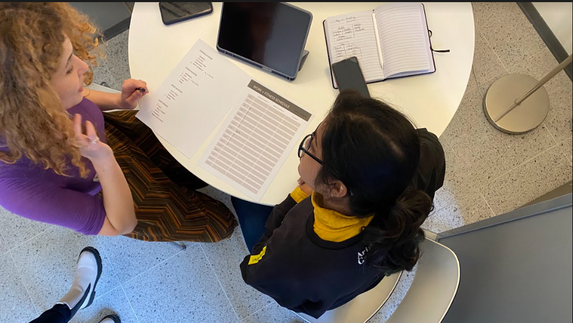
How would an energy deficit society in 2035 survive?
As energy resources become more and more deficit, we speculated about a society where energy would become a currency for survival. In this world, what if low energy generators rioted against high energy generators due to energy sharing disparity. What new designs and technology would become relevant and present?
Key Challenges:
KEYWORDS
ANTICIPATION DESIGN - FUTURES - WORLD BUILDING - DIAGETIC OBJECTS
February 2023
Concept Generation
We used the 2x2 Matrix Technique of the Global Business Network as shared by Peter Schwartz.
-
Through research we determined the two influencing factors of our axes and also the four polarities that could possibly exist.
-
After a few challenging iterations and combinations we arrived at our final Matrix. We used the Matrix to ideate and build concept ideas. Through this we arrived at 4 new concepts.
>>


Iterating Influences and Matrices

Writing scenarios within each matrix

Expanding each Concept through smaller ideas

Iterating Influences and Matrices
The Final Concept
A Wellness Inspired Co-Working Neighborhood

The City as a Playground
As work starts to take more and more of our time in the day, we anticipate that making time for physical fitness will also get difficult. Traditional offices offer gym services and some indoor sports today.
We imagine our co-working space designed to use the city as an active playground. The service aims to offer unique physical fitness opportunities to coworkers to blend physical fitness into their work routines.
We currently imagine our service to offer fitness challenges, monthly events, going beyond traditional fitness routines, gamifying the health experience, providing coaches and nutritionists and medical support among a few things
Generating Service Needs
Online Co-Design Session
-
In this session we created Boundary Objects and performed a Co-Design Workshop to verify our idea with real participants.
-
The session used tools like Card-Sorting, Collage Making to understand their service needs and help use narrow down our service parts.
-
At the end of the session we collected feedback. The participants had chosen nearly all the services we had hypothesized. They also shared that they wanted to learn more about the service experience.
-
We went on to design the Service Journey of the User to start building our Service Experience.
-
We also made a re-designed version of the coworking experience that our participants built through a collage.

Service Prototyping
ITERATION 1:LO-FI
HOW MUCH TIME WILL A USER SPEND?
-
We learnt that users wont spend more than 1-2 hours in a day on wellness activities at our co-work.
-
Participants expressed and interest in having new learning activities assisted by coaches along with a regular activity they are more comfortable with.
-
Our participants found our scheduling mechanism simple and easy to follow.
-
Participants valued human discussion and customization with a fitness expert.
-
Our schedule did not have an indication of whether an activity will be assisted by coaches, which we added.
-
Participants were curious to know the total amount that they will have to spend for their selections.
-
Participants also wanted to know what would happen if they cancelled an appointment on short notice, how would it reschedule.

AFFINITY MAPPING
& FURTHER IDEATION
ITERATION 2:HI-FI
HOW WILL A USER RESCHEDULE?
-
We designed a high-fidelity prototype on Figma with two task flows and tested with 3 users. 3/3 were able to finish both tasks successfully.
-
We were able to identify that our rescheduling mechanism was easy to follow.
-
It helped them learn about this function and they valued it.
-
This prototype was designed in15 minutes
-
The key personal takeaway for me was that simple hi-fidelity prototypes can be very helpful in communicating small service stories.
-
It is also extremely effective for quick testing.


























